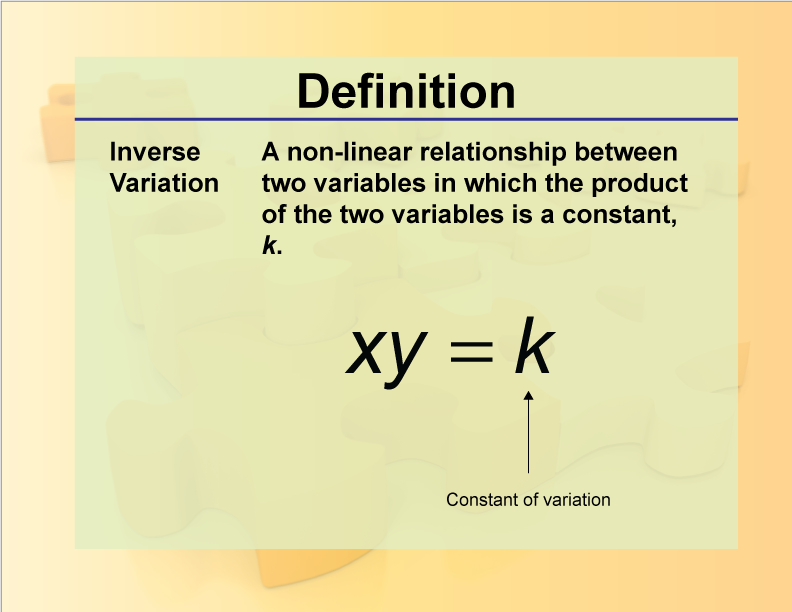
Display Title
Definition--Rationals and Radicals--Inverse Variation
Display Title
Inverse Variation

Topic
Rationals and Radicals
Definition
Inverse variation describes a relationship between two variables in which the product is a constant. When one variable increases, the other decreases proportionally.
Description
Inverse Variation is a key concept in Rational Numbers, Expressions, Equations, and Functions. It describes situations where one quantity increases while the other decreases, maintaining a constant product. For example, the relationship between the speed of a vehicle and the time taken to travel a fixed distance is an inverse variation. This concept is crucial in understanding rational functions, where the product of the variables remains constant. Inverse variation is used in various fields such as physics, where it describes relationships like the inverse square law, and in economics, where it models supply and demand relationships. Understanding inverse variation helps in solving rational equations and in analyzing real-world problems where such relationships occur.
For a complete collection of terms related to polynomials click on this link: Rationals and Radicals Collection
| Common Core Standards | CCSS.MATH.CONTENT.HSA.REI.A.2, CCSS.MATH.CONTENT.HSN.RN.A.1, CCSS.MATH.CONTENT.HSF.IF.C.7 |
|---|---|
| Grade Range | 8 - 12 |
| Curriculum Nodes |
Algebra • Rational Expressions and Functions • Rational Functions and Equations |
| Copyright Year | 2013 |
| Keywords | radicals, radical expressions, rational numbers, rational expressions, definitions, glossary term, rational functions |